Moving Vegetables Part III
For those who have been interested specifically in my projects here, let me start by apologizing for the delay since my last update. I’m hoping to have a posting related to the status of the Ceramic Water Purifier program completed in the next couple of weeks.
The time since my last update has involved a near constant study of the methods by which green leafy vegetables are transported in this country. Stuffed into rice bags, loaded on top of lotus leaves, packed into wicker baskets one on top of another, or simply arranged in the back of a cart, they’re moved in dozens of ways. The only common denominator seems to be that the roads are bad, the packaging unreliable, and the rate of spoilage high. The predictable consequence is that it is often very difficult to try to earn one’s living supplying green-leafy vegetables in Cambodia.
Farmers and Collectors are only able to work for a limited number of harvests and a limited time during each harvest. When they do work, their profits tend to be about five cents per kilogram. If they and their families could live comfortably eating only what they grew, a not-quite-cabbage-not-quite-spinach crop called Spey, they would still earn only $300USD each year. With that money they would need to clothe themselves, maintain their homes, educate their children, and invest for the next crop.
After the writing of my last update in May, we completed a series of open questionnaires with farmers, collectors, wholesalers, and retailers. Each questionnaire was about 35 questions long, targeted at a specific group. Our survey team spent nearly two weeks gathering the results. I spent another two weeks desperately training several of my bilingual coworkers to put that information onto the computer for me. The results were sometimes predictable, sometimes surprising, and sometimes absurdly correct.
It’s truly amazing what can be lost in translation between languages, cultures, and viewpoints. While trying to determine the financial consequences of farmers feeling pressured to sell their crops early despite low prices or insufficient demand, 5 surveyors asked 32 different farmers “Have you ever harvested too late? What were the consequences of this?” We got the following responses:
“Yes. The leaves become red.”
“Yes. In the hot season, the plants start to flower.”
“Yes. Bad leaves. Becomes smaller.”
This was still more surprising because we had previously spent a full day reviewing the meaning and purpose of each question with our survey team. About half of farmers were happy to describe in various levels of detail, just what an overripe vegetable looks like. The other half simply told us curtly that they wouldn’t make such a mistake. These weren’t the results for which we’d been aiming but they were interesting nevertheless.
In many ways, that became the theme of the survey. The answers we received gave us a better insight into what was important to those responding. If the questions we asked were aimed at an area they felt was unimportant or irrelevant, they changed the meaning slightly so as to give us the information they thought was necessary. In addition to descriptions of red leaves and flowering plants, several responses to our question about late harvests pointed out that waiting longer made insect and rain damage more likely.
In the last update, I wrote about farmers trying to solve the insect problem by using nearly seven times the recommended dose of pesticides on their crops. By the end of this survey, I’d tracked down an extensive study by the Centre d’Étude et de Développement Agricole Cambodgien (CEDAC) on pesticide use in Cambodia. From that study and from conversations with farmers and contacts in the field, I learned that pesticide use in Cambodia is horribly unregulated, that farmers often continue to apply pesticides with a hand-pumped backpack right up until the day before harvest, that they and the retailers selling to them generally have no training, and that soapy water and a clean towel goes a long way to ensuring a healthier diet. I also learned that though bugs decimate crops during the dry season, they are thankfully less rapacious during the rainy. Instead, they are replaced by flooding and by damage caused directly by the rain itself. This leaves only a very small window each year during which green leafy vegetable crops can actually be considered in season.
Collectors, Wholesalers, and Retailers, were all happy to estimate how many of their vegetables spoil during storage and transport. Combining all of their perspectives led to some surprising results. Together, they estimated that about one third of their produce spoils on the way to market. Farmers told us that only about 85% of their crop is of good quality at harvest time. Put these two findings together and the result is that only about half of what’s planted is finally sold for human consumption.
Those involved have of course found a way to compensate for this. Collectors often purchase whole fields from farmers rather than individual crops. They dictate the time and amount collected during each day of the harvest. When selling their crops to wholesalers, no detailed inspection is allowed. Business relationships here are based on trust and mutual support. After seven hours in scorching heat with hundreds of kilos if vegetables piled on top of each other, handling the crop to inspect it would only cause further damage.
Of course, not being able physically to handle the crop made our job of trying to measure temperature, weight, and spoilage a little difficult. We provided some compensation to everyone with whom we interacted but when we asked collectors and wholesalers to evaluate spoilage at six key locations in their own containers, they always told us none had occurred. When we tried to take weight and temperature measurements ourselves at the same locations, they were understandably irritated at the lost time and the possible damage to their crops.
One day, when I accompanied the surveyors into the field to see how work was progressing, they were a little uncomfortable. “Do we really need to measure in six places??” they asked repeatedly. “Can we maybe just measure in only three places this time? Or better yet, can we just not do it at all…?”
Not doing any measurements at all wasn’t an option. By the end of the day though, I had been haggled down to only four locations. It seemed a good idea. I got some of the information I needed and everyone else felt less put upon.
Predictably, since making these measurements just didn’t fit into people’s comfort zones, our records of temperature and weight were often unintelligible garbage. By the end of the survey, I was able to use them to conclude three things:
- Adding water to a vegetable crop while it’s losing mass from heat and spoilage, makes it look fresher. It also makes measuring spoilage through weight loss an exercise in futility.
- When you pile 250kg of vegetables into a wicker basket, it tends to be a few degrees hotter near the heart of the pile.
- Sometimes, you just can’t physically measure things and need to take people’s word about them.
With all of this information collected and analysed, I drafted a report summarizing the results for the Agricultural Quality Improvement Project (AQIP), the Australian group funding this project. For those of you who are a little more curious and/or want to see pictures, tables, and diagrams, AQIP has been kind enough to grant me permission to post it electronically here.
After the report was approved, the next step to me seems to have been the most important one. We arranged a meeting with the people who actually work in the green-leafy vegetable supply chain: farmers, collectors, wholesalers, and retailers. We spent an afternoon with them, discussing the results of the survey and seeking their opinions on how to improve the system. Two of the more promising options were selected. Construction began the following week.
Now, a month later, we are halfway through field testing these prototypes. The hope is that they will provide a cheap easy means to preserve crops, thereby bringing more money back to those in the rural economy who need it. We’ll meet with the surveyors to see the data they’ve already gathered this afternoon.
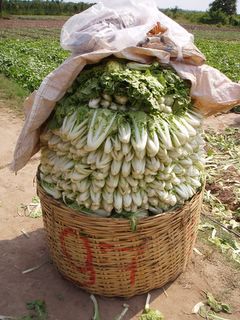
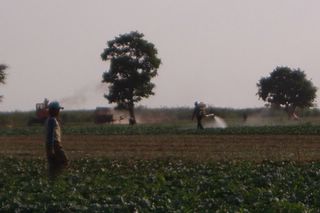
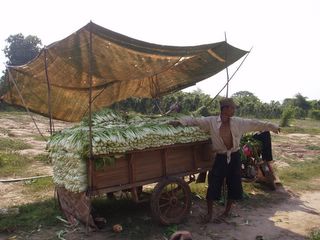
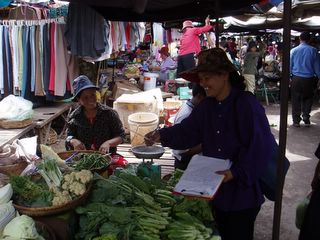
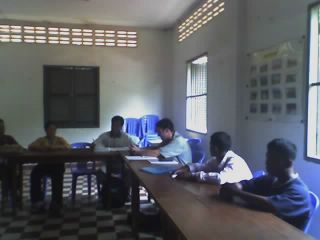

0 Comments:
Post a Comment
<< Home